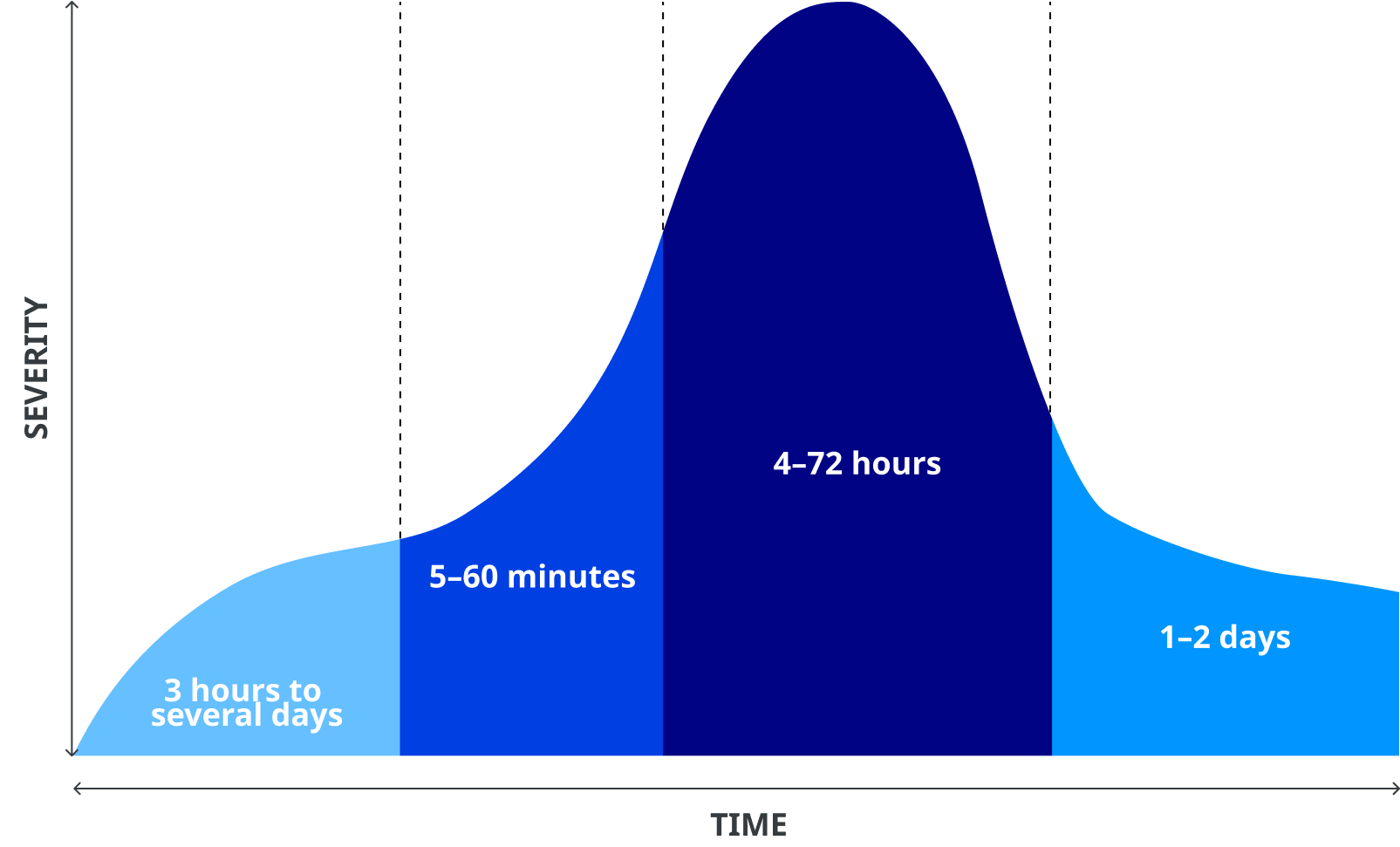The different
phases during a
migraine attack
A migraine attack can be divided into 4 phases,
but not all patients will experience every phase.1–3
Click the different stages below to learn more
Prodrome
Aura
Attack
Postdrome

Adapted from a webpage by Cleveland Clinic11
The first phase: Prodrome
Around 70% of patients will experience prodromal symptoms 1 to 2 days before a headache attack. This phase is more commonly seen in women1
Prodromal symptoms include1,2:
Frequent yawning
Emotional changes
Stiffness in the neck
Drowsiness and unenergetic
Sensitivity to light or sound
Cravings
Constipation
Edema
The second phase: Aura
- Every 1 in 4 migraine patients experience aura
1
- Aura describes a set of fully reversible neurological symptoms that can occur before or during a headache attack
1,2
- Symptoms usually begin gradually, build up within a few minutes and can last up to 1 hour
1,2
Aura symptoms include1,2,4:
Visual disturbances
Visual disturbances, such as blind spots, seeing flashes of light
Seeing zig-zig patterns
Loss of vision
Other symptoms
Dizziness
Difficulty speaking
Weakness or numbness in the face or one side of the body
Tingling sensations like pins and needles in an arm or leg
The third phase: Attack
- An attack can last for 4 to 72 hours if untreated
2
- The frequency of an attack varies from person to person.2 Migraine attacks could occur rarely, or maybe several times a month
2
Symptoms include2:
Throbbing pain on one or both sides of the head
Sensitivity to light or sound, and sometimes to odor and touch
Nausea
Vomiting
The fourth phase: Postdrome
- After a migraine attack, patients may feel exhausted and dizzy, experience difficulty in concentrating or become extremely excited
1,3
- In some cases, sudden head movements can lead to short-term pain in the same location as the previous headache
1,2
Simply answer a few questions to find out if you could have migraine now.